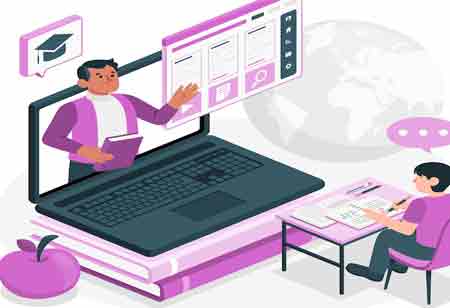THANK YOU FOR SUBSCRIBING
Be first to read the latest tech news, Industry Leader's Insights, and CIO interviews of medium and large enterprises exclusively from Education Technology Insights
Can LMS be Instrumental in Keeping the Older Students Engaged?
There has been a tremendous fallout among the teachers in the past few years; therefore, they should be introduced to modern techs to reduce this problem.

By
Education Technology Insights | Monday, July 27, 2020
Stay ahead of the industry with exclusive feature stories on the top companies, expert insights and the latest news delivered straight to your inbox. Subscribe today.
There has been a tremendous fallout among the teachers in the past few years; therefore, they should be introduced to modern techs to reduce this problem.
Fremont, CA: The reduction in the number of middle school teachers in the last decade has come up to be a high level of stress, long working hours, unclear expectations, and not enough support as the main issues behind their decision to part ways with the education system. With fewer teachers, it is easier for middle schools to fall into the vicious cycle of poor performance. Fewer teachers mean bigger classes, which means students will get less teaching attention, which then means poor grades, which then reflects poorly in the teacher's professional performance and encourages them to get out of the system. Thus in order to break this cycle, the middle school teachers need all the support, which can come in various shapes and forms, but education technology will be in the mix.
Thus, there are some points on how edtech tools like learning management systems (LMS) with a focus on school learning management systems can maximize their limited time and supplies while delivering a more engaging, personalized experience of middle school students.
Game-based learning
[vendor_logo_first]Teachers can use such resources to increase engagement rates with gamification. Things such as gathering points, collecting badges, and getting trophies are no longer associated just with just games. A little competition can take the students a long way during the learning process, and many school LMSs include gamification elements that make it easy to design engaging online lessons.
Analytics and reporting
The teachers can further sort student learning data into understandable reports. Data is robust; thus, teachers can create standard or custom charts and reports of data like assignment grades, class completion, lesson progress, missing work, and so on. Therefore they can point out exactly where one student might need extra help or when others could benefit from excellent resources.
Adaptive learning
Most importantly, a great learning management system should come with features that support adaptive learning so that educators can tailor their teaching as the student learns. This means that as each student progresses via their learning trajectory, the system makes personalized recommendations of what that student needs to do next: redo the learning module, check further resources take, enroll in a different learning path, and so on.
See also: Top EDTech Solution Companies







